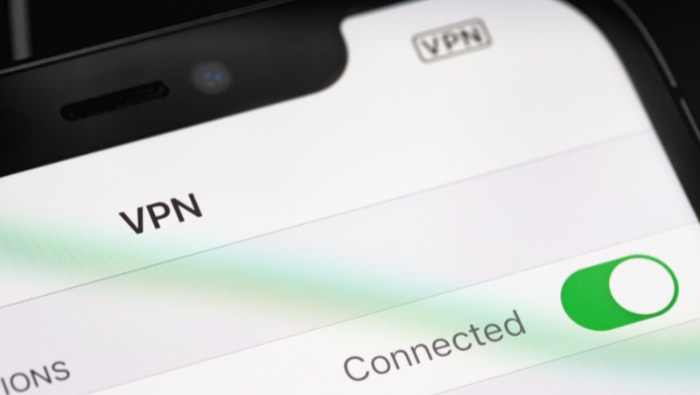Can the WiFi Owner See What I’m Browsing? Here’s the Truth

Connecting to a Wi-Fi network feels routine, but have you ever wondered who might be watching your online activity? The owner of the network you're using, from a coffee shop to your own home, can see more than you might realize. By default, Wi-Fi administrators and internet service providers can observe the websites you visit, how long you stay there, and the amount of data you use.
While modern encryption like HTTPS protects the actual content of your browsing on secure sites, it doesn’t hide the domains you connect to. It's a common mistake to think private browsing modes offer network protection; they only erase local history on your device, leaving your activity visible to the network operator.
Fortunately, practical defenses like VPNs and encrypted DNS exist to genuinely shield your browsing from observation.
What Owners Can See
When you connect to a Wi-Fi network, the owner has a window into your online activity. The extent of what they can see depends largely on the type of connection your browser makes to a website.
While modern security measures provide significant protection, a surprising amount of information can still be available to the person controlling the network.
HTTP vs. HTTPS Visibility
The most critical distinction in browsing privacy is between unencrypted HTTP and encrypted HTTPS connections. When you visit a website using an older HTTP connection, your activity is completely exposed.
The network owner can see the full content of the pages you view, the specific URLs you access, and any data you submit, such as in login forms or search bars. It is the digital equivalent of sending a postcard, where anyone handling it can read the message.
In contrast, an HTTPS connection encrypts the data exchanged between your device and the website's server. This prevents the Wi-Fi owner from viewing the actual page content, but it does not make you invisible.
The domain name itself remains visible, though the specific page you are on is hidden.
Metadata Exposure
Even when using secure HTTPS connections, Wi-Fi owners can still gather a significant amount of metadata from your online activity. This information is often recorded in the router's administrative logs.
These logs can show a list of the domains you have visited, the exact times you connected to them, and the amount of data you sent and received during each session. Furthermore, the router can identify the specific device making these requests through its unique MAC address, linking your browsing patterns directly to your phone or computer.
This trail of metadata can create a detailed profile of your online habits without ever accessing the content of your communications.
DNS Logging
Another way network administrators can monitor your browsing is by observing Domain Name System (DNS) requests. Every time you type a website's address into your browser, your device sends a DNS query to translate that human-friendly domain name into a numerical IP address it can connect to.
By default, these queries are sent in plaintext, making them easy for a router to intercept and log. This creates a comprehensive record of every domain you attempt to visit, regardless of whether you ultimately connect via HTTP or HTTPS.
Unless you use an encrypted DNS service, this log provides a clear and simple list of your browsing destinations to the network owner.
Who Can See What

The visibility of your online activity depends greatly on who is monitoring the network. Different parties have distinct vantage points and capabilities.
A local Wi-Fi owner, your Internet Service Provider (ISP), and administrators of managed networks like those at schools or workplaces each have different methods and policies for observing traffic, meaning what one can see, another might not.
Wi-Fi Owner/Admin
The owner of a local Wi-Fi network, such as in a home or a small business, has direct access to the router’s administrative settings. Through the router's admin panel or specialized monitoring tools, they can view logs that record the domain names of websites accessed by connected devices.
These logs often associate browsing activity with specific devices by capturing their unique MAC addresses and include timestamps for when each connection was made. This allows the administrator to build a detailed picture of what sites were visited, which device visited them, and at what time.
ISP vs. Local Admin
Your Internet Service Provider has a broader view than a local administrator. While a local admin sees traffic within the network, the ISP sees all the traffic that passes from your network to the wider internet.
Both can log metadata about your traffic, such as the domains you visit, but the ISP operates at a much larger scale. It is important to clarify that your monthly billing statement from an ISP will not contain a list of websites you have visited.
Bills typically show only overall data consumption. The detailed browsing metadata resides in the ISP’s internal logs, which are kept according to their own data retention policies, unless your traffic is fully tunneled through a service like a VPN.
Managed Networks
Networks in environments like schools and workplaces are often subject to a much higher degree of scrutiny. These organizations frequently deploy sophisticated monitoring and filtering systems designed to record and control user activity.
Such systems can log browsing history in great detail, block access to certain categories of websites, and enforce acceptable use policies. On these managed networks, any activity can be subject to inspection, and device-level privacy settings may be overridden by network-level controls.
Users on these networks should generally assume that their browsing is not private.
Myths and Misconceptions

Many common beliefs about online privacy are based on misunderstandings of how internet technologies work. Popular browser features and security protocols offer specific protections, but their limitations are often overlooked, leading to a false sense of security.
Clarifying these misconceptions is essential for accurately assessing how visible your browsing activity truly is.
Incognito ≠ Network Privacy
One of the most persistent myths is that using a browser's private or Incognito mode makes your activity anonymous. This is incorrect.
Private browsing modes are designed only to prevent your browser from storing information on your local device. When you close an Incognito window, your browser deletes the history, cookies, and any site data from that session.
However, it does absolutely nothing to hide your activity from the Wi-Fi network owner, your internet service provider, or any websites you visit. Your traffic still flows through the router, and logs can be created just as they would be during a normal browsing session.
HTTPS Limits, Not Invisibility
While HTTPS is a crucial security tool, it does not make you invisible online. Its primary function is to encrypt the content of your communication, which means a network owner cannot see the specific pages you view or the data you enter into forms, like passwords or credit card numbers.
However, the connection itself is not hidden. The Wi-Fi owner can still see the domain names of the websites you connect to, the times you connect, and the amount of data you exchange.
Think of it as sending a sealed letter; the mail carrier cannot read the contents, but they can see the address it is going to and when it was sent.
Clearing History Doesn’t Clear Logs
Another common mistake is believing that deleting your browser history erases all traces of your online activity. Clearing your history only removes the records stored on your own device.
It has no effect whatsoever on the logs kept by Wi-Fi routers, DNS servers, or Internet Service Providers. These external logs are stored on separate hardware and are completely independent of your browser.
If a network administrator is logging traffic, your activity records will remain in their systems long after you have cleared your personal browsing data.
Privacy Tools That Work

While default network settings leave your browsing activity exposed, several effective tools can dramatically reduce what Wi-Fi owners and ISPs can see. By layering different privacy-enhancing technologies, you can move from a state of broad visibility to one of significant protection.
These tools work by encrypting different parts of your connection, systematically closing the windows that network administrators use to monitor your activity.
VPN
A Virtual Private Network, or VPN, is one of the most comprehensive tools for securing your internet traffic. It encrypts all the data leaving your device and routes it through a secure server operated by the VPN provider.
For the local Wi-Fi owner, this means they can no longer see the websites you visit or the content of your traffic. Their logs will simply show that your device is connected to a single VPN server, not the dozens of sites you may be accessing.
Many commercial providers offer this service; for instance, a provider such as NordVPN can establish this encrypted tunnel for you. It is important to note, however, that while your destinations are hidden, the network owner can still see that you are using a VPN and can observe the total volume of data being transferred.
Encrypted DNS (DoH/DoT)
To prevent Wi-Fi owners from logging the domains you visit, you can use encrypted DNS. Technologies like DNS-over-HTTPS (DoH) or DNS-over-TLS (DoT) encrypt the queries your device sends to translate a website's name into an IP address.
Normally, these queries are sent in plaintext, giving the router an easy-to-read list of every site you access. By encrypting them, you effectively blind the router to your browsing destinations.
This prevents local network administrators from reading your DNS history, closing a major loophole for traffic analysis. Many modern browsers and operating systems now include built-in support for enabling this feature.
HTTPS-Only Habits
Consistently using HTTPS is a fundamental privacy practice. While most major websites now use HTTPS by default, some links or older sites may still direct you to an unencrypted HTTP connection, exposing your activity.
Adopting an HTTPS-Only habit helps ensure your communication is always encrypted. Most modern web browsers offer an “HTTPS-Only Mode” in their settings.
When enabled, the browser will try to establish a secure connection for every site you visit and will warn you before connecting to an insecure HTTP page. This simple adjustment prevents accidental exposure of page contents and specific URLs, reducing what can be observed to just metadata.
Scenarios and Setup

Applying privacy tools effectively requires adapting your approach to the specific network environment you are in. The level of monitoring and the administrative policies can vary dramatically between a home network, a corporate office, and a public hotspot.
For any situation, it is critical to enable your privacy protections, like a VPN, before you start browsing or using applications, as any activity before the tunnel is established can be logged by the network owner.
Home
On your home network, you have the most control over your privacy settings. It is useful to familiarize yourself with your router's administrative panel to see if it has logging or parental control features enabled.
Some parental control systems work by monitoring DNS requests or inspecting traffic, which creates a log of browsing activity. If you want to enhance your privacy, you can install a VPN on individual devices or, for more comprehensive coverage, configure the VPN directly on a compatible router.
A router-level VPN will protect every device that connects to your Wi-Fi, while a device-level app provides more flexibility when you are on the go.
Work/School
When using a network at your workplace or school, you should always assume your activity is being monitored. These managed networks are private property, and organizations have a right to implement policies that track usage for security and productivity reasons.
Using privacy tools like a VPN might be a direct violation of your organization's acceptable use policy and could lead to disciplinary action. For personal tasks, it is generally safer to use your own device with a cellular data connection.
If you must use the managed network, be mindful that your activity is likely not private, and only use approved tools and services.
Public Wi-Fi
Public Wi-Fi hotspots, such as those in cafes, airports, and hotels, are notoriously insecure and present significant privacy risks. On these networks, it is essential to start your VPN before you connect any applications or open your browser.
This ensures that all your traffic is encrypted from the moment you go online. Make it a habit to double-check that your connections are secured with HTTPS, and avoid conducting any sensitive activities, like online banking or entering passwords, if you cannot establish a fully protected session.
A few moments of preparation can prevent your personal information from being exposed on these open networks.
Conclusion
By default, the owner of a Wi-Fi network has a significant view into the online activities of connected users. They can typically see the destination domains you visit, timestamps of your activity, the amount of data you use, and the specific device you are using.
While an HTTPS connection successfully hides the content of your pages, it does not obscure this metadata. In contrast, any activity on older, unencrypted HTTP sites remains completely visible, exposing everything from the full URL to the information you submit in forms.
Achieving meaningful privacy from network observers requires a deliberate and layered approach. Relying on your browser's Incognito or private mode is not the solution, as it only erases local data and does nothing to hide your activity from the network.
True protection comes from combining tools like a VPN to encrypt all your traffic, encrypted DNS to hide your browsing destinations, and a commitment to using HTTPS-only connections. Together, these measures effectively constrain what local networks and Internet Service Providers can log or infer about your online life.


